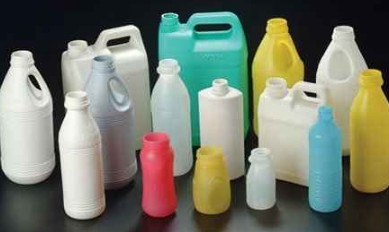Extrusion molding is used to make products such as pipes, tubes, profiles, sheets, and some types of packaging materials like plastic films and sheets.
Overview of Extrusion Molding Process
Definition and Basic Principles
Extrusion molding is a manufacturing technique where a material, typically a thermoplastic or metal, is pushed through a die to create objects with a fixed cross-sectional profile. This process, known for its high efficiency and ability to produce continuous lengths of product, utilizes high temperatures and pressures. Materials, when heated, become malleable and are forced through a die, taking its shape. The cooling process then solidifies the material into the desired form. Extrusion molding excels in producing linear shapes and is widely used for items like pipes, profiles, and sheets.

Types of Extrusion Molding Techniques
Hot Extrusion
Hot extrusion involves heating the material above its recrystallization temperature. This technique is primarily used for metals like aluminum and copper, where the required temperatures can range between 350°C to 500°C. Hot extrusion is notable for its ability to create intricate profiles with excellent surface finish. However, it comes with higher operational costs due to energy consumption and wear on machinery.
Cold Extrusion
Contrastingly, cold extrusion processes materials at or near room temperature. Commonly used for steel and aluminum, it offers a cost-effective solution with low energy requirements. The process is capable of producing parts with excellent mechanical properties and surface finish. However, it may require higher press force compared to hot extrusion, impacting machinery costs and maintenance.
Plastic Extrusion
Plastic extrusion, widely used for polymers like PVC, PE, and PP, operates at temperatures specific to each material, generally ranging from 160°C to 300°C. This process is highly efficient, offering high-speed production and lower costs. It’s ideal for manufacturing pipes, films, and sheets. However, the quality of the final product heavily depends on the precision of temperature control and the quality of the raw material.
In terms of cost, plastic extrusion is generally more affordable compared to metal extrusion, with operational costs being influenced by the type of polymer used, machinery efficiency, and production speed. The lifespan of extrusion machinery can vary, but with proper maintenance, it can last for over a decade, offering significant value over time.
Find more detailed information on Extrusion Molding.
Materials Used in Extrusion Molding
Common Plastics and Polymers: A Detailed Look
Polyethylene (PE) plays a critical role in extrusion molding, offering flexibility and durability. This material becomes the top choice for packaging and piping due to its versatility. Different densities of PE cater to various needs, combining cost-effectiveness with a significant lifespan of up to 50 years. Its high production efficiency makes it ideal for large-scale manufacturing.
Polyvinyl Chloride (PVC), recognized for its rigidity and fire resistance, becomes essential in the construction industry, especially for window frames and pipes. With a moderate price tag, PVC also promises a long service life, potentially reaching 100 years. The production process of PVC stands out for its efficiency, despite the need for environmental consideration during manufacturing and disposal.
Evaluating Cost and Durability
Polypropylene (PP) finds its niche in both automotive components and consumer goods, offering a balance between flexibility and strength. This material, while moderately priced, ensures a lifespan exceeding 20 years. PP’s adaptability in the extrusion process results in efficient and quality production.
Polystyrene (PS), mainly used in packaging and disposable items, emerges as an economical option. Though less durable with around a 10-year lifespan, its efficiency in production makes it perfect for mass-produced goods.
High-Performance Materials for Specialized Uses
Acrylonitrile Butadiene Styrene (ABS) combines strength and toughness, appealing for use in automotive and electronic industries. While it comes at a higher cost, its durability and impact resistance, spanning 10-15 years, justify the investment. ABS strikes a balance in production efficiency, meeting diverse industrial demands.
Thermoplastic Polyurethane (TPU), notable for its flexibility and abrasion resistance, excels in producing tubing and protective equipment. This higher-end material guarantees durability and flexibility, often surpassing a decade in use. TPU’s specialized processing requirements are met with moderate production efficiency.
Selecting the Right Material
Choosing the suitable material for extrusion molding revolves around balancing cost, expected lifespan, and application-specific demands. PE and PS stand out for cost-effective, high-volume manufacturing, while PVC and PP are more suited to long-lasting applications. For specialized needs, ABS and TPU offer premium qualities at a higher price point.
Explore the detailed properties and applications of these materials on the Wikipedia page for Plastic Extrusion.
Key Products Made Through Extrusion Molding
Plastic Pipes and Tubing
| Feature | Detail |
|---|---|
| Materials Used | PE, PVC, PP |
| Applications | Plumbing, Medical, Construction |
| Cost | Varies; PE is economical, PVC is moderate, PP is slightly higher |
| Lifespan | PE: up to 50 years, PVC: up to 100 years, PP: over 20 years |
| Efficiency | High in production; PE and PVC are particularly efficient |
| Advantages | PE: Flexible and durable; PVC: Rigid and fire resistant; PP: Balance of strength and flexibility |
| Disadvantages | PE: UV sensitive; PVC: Environmental concerns; PP: Higher cost than PE |
Construction Profiles and Components
| Feature | Detail |
|---|---|
| Materials Used | Mainly PVC and ABS |
| Applications | Window frames, Door frames, Siding |
| Cost | PVC is economical, ABS is higher |
| Lifespan | PVC: up to 100 years, ABS: 10-15 years |
| Efficiency | High; PVC profiles are notably efficient in production |
| Advantages | PVC: Cost-effective with good insulation; ABS: Durable with high impact resistance |
| Disadvantages | PVC: Can release toxic fumes when burned; ABS: Higher manufacturing cost |
Automotive Parts
| Feature | Detail |
|---|---|
| Materials Used | ABS, TPU, High-Density PE |
| Applications | Bumpers, Trim, Fluid Conveyance Systems |
| Cost | ABS and TPU are higher, High-Density PE is more economical |
| Lifespan | Varies; ABS and TPU offer long-term durability |
| Efficiency | Moderate; depends on the complexity of parts |
| Advantages | ABS: Toughness and aesthetic appeal; TPU: Flexibility and abrasion resistance; High-Density PE: Cost-effective with good chemical resistance |
| Disadvantages | ABS: Higher production cost; TPU: Expensive to produce; High-Density PE: Less suitable for high-stress applications |
For more in-depth information about extrusion molding and its applications in various industries, visit Extrusion Molding on Wikipedia.
Technological Advancements in Extrusion Molding
Innovations in Machinery and Techniques
Recent advancements in extrusion molding machinery have significantly improved both efficiency and product quality. Modern extruders now feature enhanced control systems, allowing for precise temperature and speed regulation, crucial for consistent product quality. Advanced screw designs have improved the plasticizing efficiency, leading to faster production speeds without sacrificing the material properties.

3D Printing Integration: A notable innovation is the integration of 3D printing technologies with extrusion molding processes. This hybrid approach allows for more complex geometries and customizations in products, previously unachievable with traditional extrusion methods.
Energy Efficiency: Newer machines also focus on energy efficiency, with some models reducing power consumption by up to 20%. This reduction not only lowers operational costs but also aligns with environmental sustainability goals.
Impact on Product Quality and Variety
These technological advancements have a profound impact on both the quality and variety of products produced through extrusion molding.
Enhanced Material Properties: Modern extrusion techniques can now produce products with improved mechanical properties, such as higher tensile strength and better impact resistance. This enhancement is particularly beneficial in industries like automotive and aerospace, where material performance is critical.
Product Diversity: The advancements in extrusion technology have expanded the range of products that can be manufactured. Now, it’s possible to produce more complex profiles and shapes, catering to a wider market demand. The ability to efficiently work with a broader range of polymers has also opened up new application areas.
Quality Consistency: With better control systems, the consistency in product quality has seen significant improvements. This consistency is crucial for industries where precision and reliability are paramount.
For further insights into the advancements in extrusion molding, explore the Wikipedia page on Extrusion Molding.




